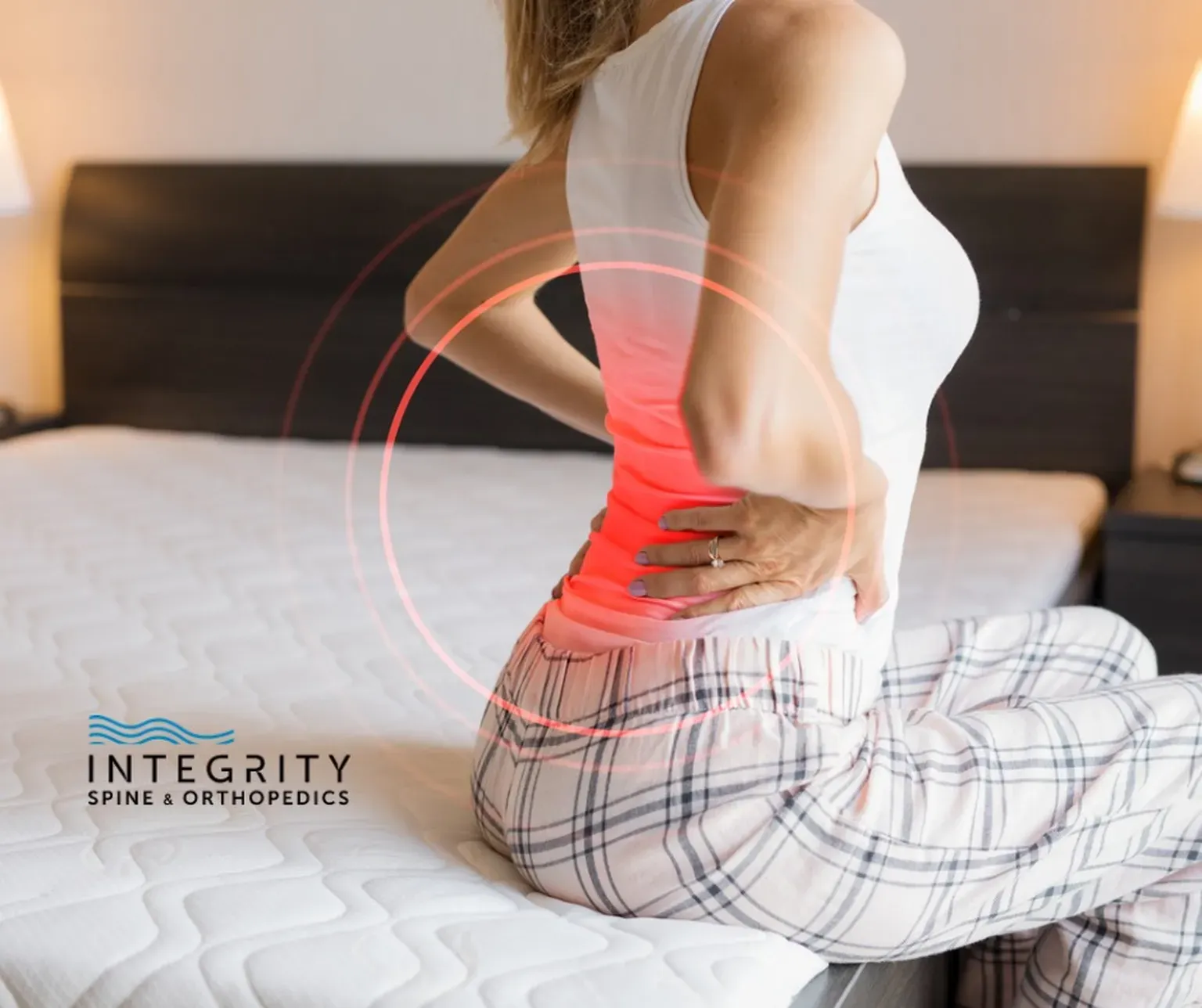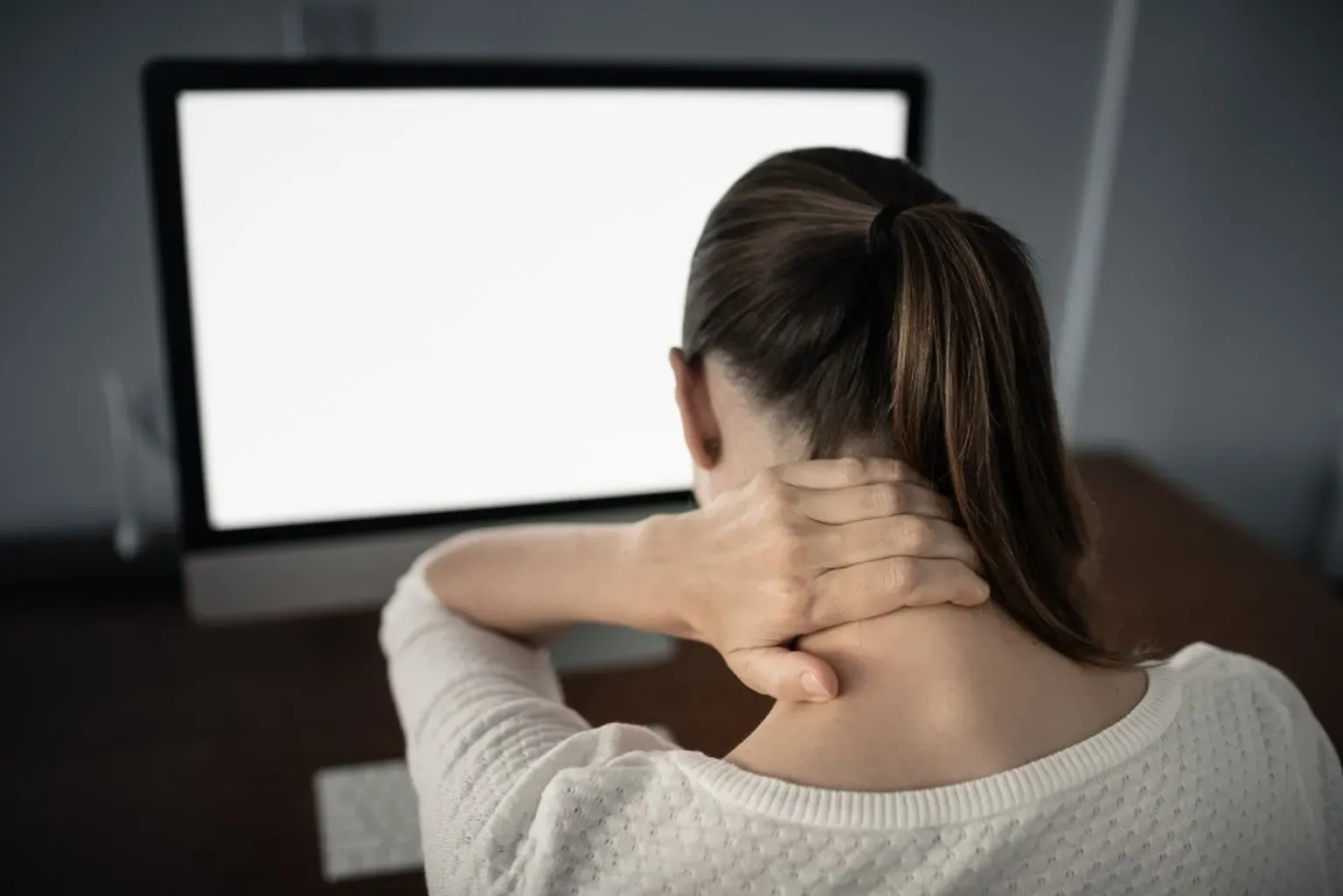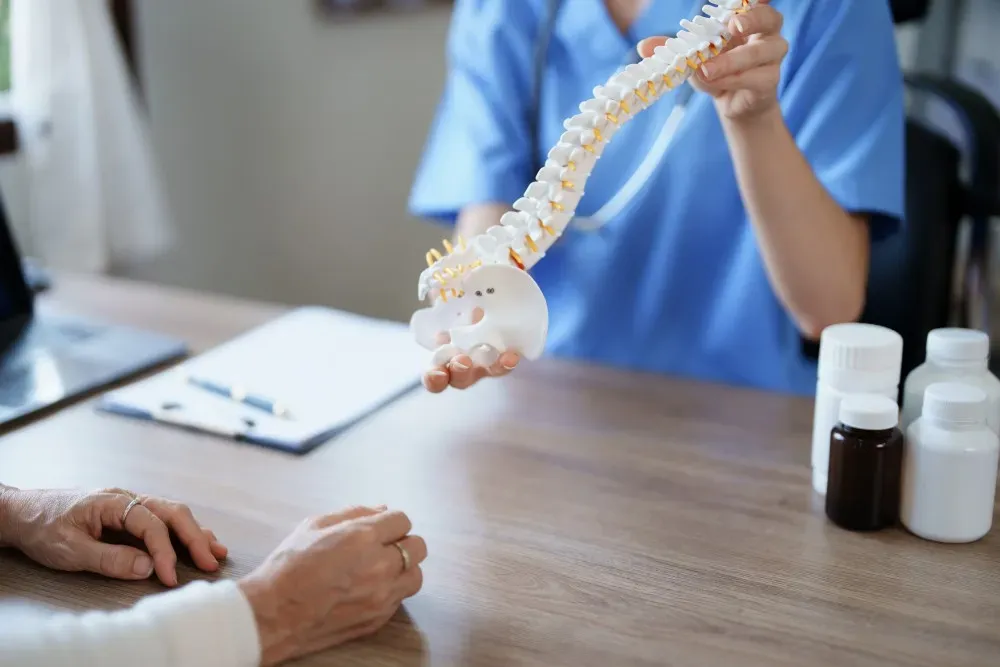Neurosurgery & Orthopedic Surgeons in Jacksonville

What is SI Joint Pain?
Research indicates that between 15-30% of people with chronic low back pain are suffering from sacroiliac (SI) joint pain.
Research indicates that between 15-30% of people with chronic low back pain are suffering from sacroiliac (SI) joint pain. If you have one-sided low back and buttock pain that worsens with movement and pressure, SI joint pain — also called SI joint dysfunction — may be to blame.
Keep reading to learn more about the causes and symptoms of SI joint dysfunction, plus the treatment options that may be available to you.
THE SACROILIAC JOINTS
The sacroiliac joints are located deep inside the body and connect the base of the spine (sacrum) to the hip bones (ilium). These joints act as the middlemen between your upper and lower body: they absorb shock and impact from walking and running, reduce pressure on your spine and help distribute weight evenly across your pelvis.
SI joints have little movement. They are supported and stabilized by a strong web of surrounding muscles and ligaments. If the surrounding ligaments are damaged, become too loose or become too tight, it destabilizes the SI joints and causes pain, inflammation, abnormal joint movement and pelvic instability. Sacroiliac joint pain can be an acute or chronic condition.
CAUSES
Common causes include:
- A traumatic injury from a car accident or fall
- Repetitive stress injuries from playing sports, running or lifting heavy loads
- Pregnancy, which loosens and destabilizes the sacroiliac joints
- Previous hip or spine surgery, which can move pressure off the low back and onto the sacroiliac joints
- Biomechanical or structural conditions in the legs or feet that cause uneven movement and poor walking patterns
SI joint pain can also occur from natural wear and tear over time or the development of arthritis. Osteoarthritis causes degeneration of the cartilage that protects joints, which leads to pain, inflammation and reduced joint mobility. Inflammatory forms of arthritis like ankylosing spondylitis — which affects spinal joints — can also damage the SI joints.
SYMPTOMS
Symptoms usually only affect one side, but can also occur in both. The primary symptoms include:
- Pain in the low back and buttock
- Pain that extends to the hip, thigh or groin
- Stiffness
- Pain that worsens during weight-bearing activities like standing, walking or climbing stairs
- Pain that worsens when sleeping on the affected side
- Weakness, numbness or tingling
- Pelvic and low back instability — a feeling that the pelvis or legs will give way when walking or standing
One-sided sharp, stabbing pain in the low back and buttock may feel very similar to sciatic pain, herniated disc pain or hip pain. Unlike sciatic pain, SI joint pain is less likely to extend past the knee.
DIAGNOSIS AND TREATMENT OPTIONS
SI joint pain can be difficult to diagnose because the symptoms are similar to those of other spine or hip conditions that cause pain in the low back and pelvis. Your doctor will likely take imaging studies and perform a physical exam to try to determine the origin of your pain. Additionally, he or she may use an anesthetic to temporarily numb the sacroiliac joints. If pain recedes, that’s a good indication for a diagnosis of SI joint pain.
In many cases, SI joint pain symptoms can be relieved with conservative treatments. Your doctor may recommend the following treatment options:
1.) Activity modifications. You may need to rest and modify some of your activities for a few days. Limit activities — like running, jumping and sports — that place a lot of stress and pressure on the sacroiliac joints.
2.) Medications. Over-the-counter NSAIDs can provide pain relief and reduce inflammation. If over-the-counter medications aren’t effective, your doctor may prescribe stronger painkillers, a short-term course of oral steroids or muscle relaxants.
3.) Physical therapy. Physical therapy can help you strengthen and stabilize the muscles, ligaments and tendons surrounding the sacroiliac joints. Therapy exercises will also help you improve flexibility and range of motion. Your therapist can help you correct any postural, body positioning or walking patterns that may be causing pain and pressure.
4.) Cortisone injections. A cortisone injection directly into the joint can temporarily reduce pain, inflammation and irritation.
You may also find pain relief with chiropractic care, deep tissue massages and using hot/cold compresses.
FUSION SURGERY
If you continue to have pain that isn’t relieved by conservative treatments, or pain that affects your ability to function normally, surgery may be an option. During sacroiliac joint fusion surgery, your surgeon will use screws and rods to fuse the bones of the sacroiliac joint. This eliminates movement in the joint and relieves pain and pressure. Today, joint fusion can be performed as a minimally invasive procedure. Seek medical advice from your doctor to review your treatment options before choosing to undertake fusion surgery.
PREVENTION
SI joint pain isn’t always preventable if it’s caused by an underlying medical condition like arthritis. However, you can take self-care steps at home to keep your joints healthy and flexible.
1.) Exercise regularly. Regular exercise helps strengthen the muscles that surround and protect joints. Mix up your routines with strength training, bodyweight exercises, swimming and water aerobics, and cardiovascular exercises so that you’re not placing repetitive stress on the same joints every time.
2.) Stretch regularly. Along with exercising, stretch every day to prevent muscles, ligaments and tendons from getting too tight and causing undue stress. Yoga and tai chi are gentle, low-impact forms of movement that incorporate stretching.
3.) Lose excess weight. Excess weight puts more pressure on your joints. Eat a balanced diet with plenty of fresh foods and exercise regularly to maintain a healthy weight.
4.) Practice good body positioning. Make a conscious effort to correct poor posture and poor body positioning while standing, sitting, bending over and lifting heavy loads. Wear properly fitting shoes with good arch and heel support to maintain alignment while walking.
INTEGRITY SPINE AND ORTHOPEDICS TREATS JOINT AND SPINE CONDITIONS
At Integrity Spine and Orthopedics, we treat a wide range of acute and chronic back, joint and musculoskeletal conditions. Our physicians are board-certified doctors who specialize in general orthopedic care, pain management and minimally invasive spinal surgeries. If you’re experiencing pain, weakness and loss of mobility that’s affecting your ability to function, we offer services to help you get back on your feet and back to doing what you love.
Call us or fill out an online form to schedule an appointment. We also offer free MRI reviews to qualified patients.




